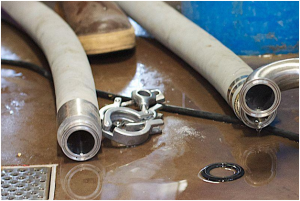Storing and transporting fuel and oil can be dangerous and petrol stations, in particular, follow strong guidelines when it comes to their construction, the distribution of fuel from the underground tanks to the cars and then the Tank decommissioning when they are no longer used. Specialist companies are used along the way from tankers to deliver the fuel, hose manufacturers to create the pumps and Tank decommissioning such as www.ashremediation.co.uk/tank-decommissioning to remove the petrol tanks when they are no longer in use or are damaged.

Image Credit
The answer is not to use silicone hoses
Put simply, although silicone hoses have a variety of purposes, your silicone hose manufacturer will be able to offer expert advice on the different applications, they most definitely should never be used for oils and fuels.
Our advice
For best results, we recommend choosing other materials rather than silicone for applications that mean fuel or oil will come into contact with the hose. Check with a reputable silicone hose manufacturer. For example, fluorocarbon and fluorosilicone liners both have excellent chemical resistant properties.

The outcome
The molecular structure of silicone lends itself to many purposes, pressures and temperatures; interestingly though, both fuel and oil are among a very few substances – including most acids and diluted sodium hydroxide – that break down this molecular structure, ultimately acting as a solvent on the silicone which means it will deteriorate over time. A specialist company can offer advice about your specific application.
Options
For fuel hose applications we recommend nitrile rubber and PTFE and here we look at their properties and explain how they work.
Nitrile Rubber or NBR is an oil resistant synthetic rubber that lends itself well to use in fuel hoses, gaskets, and rollers, as well as other applications that require oil resistance. It is perfect as a fuel filler hose.
PTFE or Polytetrafluoroethylene lined hoses are often the best choice for corrosive chemical applications. It also has excellent resistance to the diffusion of automotive fuels, particularly when compared with plastics and rubbers.
Maintenance
Looking after your hoses is an important job. Cleaning them should be done with hot soapy water; oil-based solutions like WD40 are too abrasive and will cause the hose to lose its color. The most effective way to cut a hose is to use a sharp snap-off cutting blade and then to use a hose clip around it to ensure a straight line.
Conclusion
For the right application, it has to be silicone hoses, particularly as they operate at much higher temperatures and pressures than other rubber hoses.
